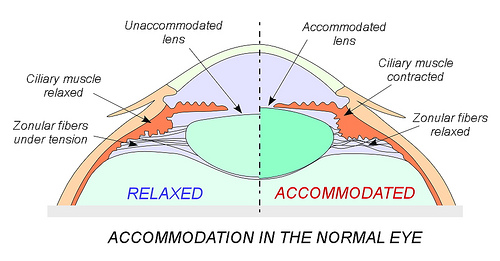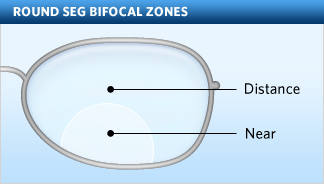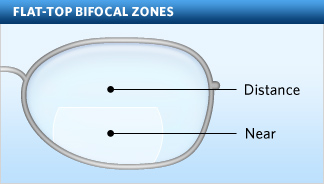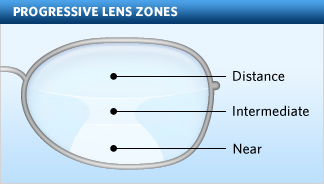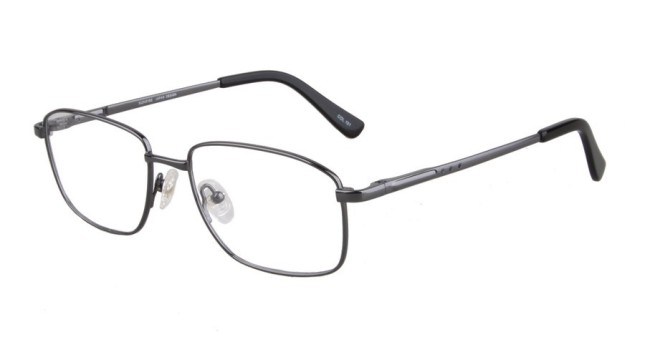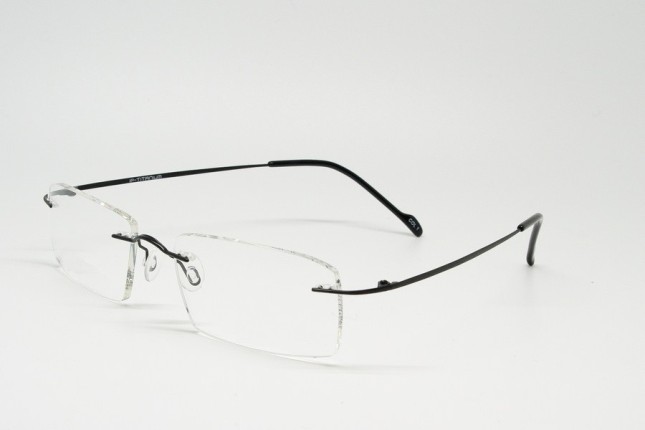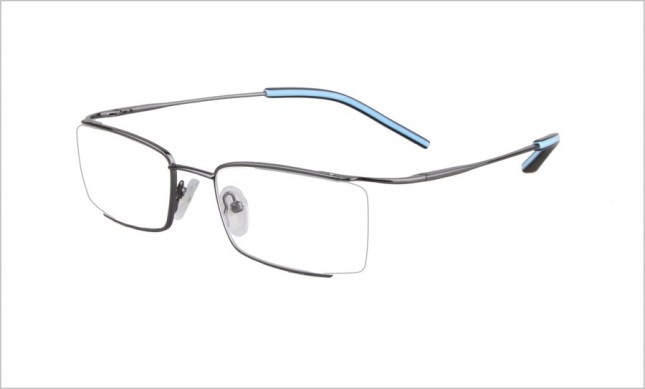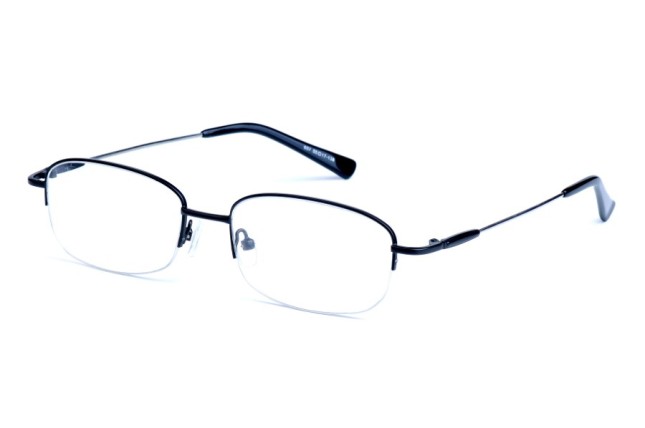If you are around 40 years old and have been facing difficulty for seeing objects held at reading distance you have reached ‘presbyopic’ age. After a visit to your eye specialist, they’d have told you that you need bifocals to make you see clearly while reading. There is a good chance that they might have mentioned progressive lenses ( also called multi-focal or corridor lenses) as an alternative. Some opticians have now started bandying the term ‘auto-focus’ lenses though there is nothing ‘auto-focus’ in them except that they are a piece of more specialized glass or plastic! What are these lenses really?
As children, our eyes can focus objects at any distance effortlessly. If you were sitting around reading a book and a plane passed across the sky, your eye can focus from the book to the plane in a fraction of a second. This ability of the eye focus at various distances in an instant is because of the mechanism called accommodation (read more about it here).
The human eye has an inbuilt crystalline lens that is highly elastic. It changes its shape to focus at different distances because of the action of small fibers attached to its edges. In the aging eye the lens and fibers lose their elasticity so it fails to focus efficiently. The range of accommodation in childhood is around 14 diopters and this falls to almost zero when we cross 60 years.
See another visual representation of accommodation with descriptions here.
As we age the ability of the eye to focus quickly becomes reduced. This loss off accommodation starts from near focusing distance so for a while we are still able to read or see objects held further away (up to arms length), clearly. To allow our eyes to focus at normal distances we then have to start wearing spectacles designed to focus at around a foot away from our eyes.
Between the age of 40 to 50 there is still some reserve accommodation left so focusing at intermediate distances is still possible. This is the distance that we normally place our desktop computer monitors at. As the near focusing ability wanes with age (between 47-50 years) even objects at this distance becomes blurred. The tendency then, is to tilt our head backward and peer through the bifocal segment of the spectacles. The bifocal lenses have two zones, one on top that focuses for distance and one below that focuses for near.
If we keep our heads tilted backwards and read for too long it is certainly not good for our neck. That is where the progressive lenses have their role to play. Progressive lenses have no distinct zones for the various distances. The power in the lens changes gradually from top to bottom, the topmost part being for distance, middle for intermediate distance and the bottom for near.
Read more about progressive lenses here (where the above images were sourced from).
Besides allowing you to focus at all distances, these lenses also allow you to ‘look younger’! Since bifocal lenses have a distinct demarcation line separating the zones others can ‘guesstimate’ your age to be above 40 by looking at your spectacles. Therefore if you are conscious of your age or want a trendier looking spectacle, progressive will make an excellent choice.
If you consider progressive spectacles as an option keep these facts in mind.
- It takes a little time to get adjusted to progressive lenses. You might feel disoriented and dizzy initially and may have to find your comfort zone. Some even develop headaches with progressives.
- The distant vision portion takes up almost the entire upper half and the ‘corridor’ where intermediate power is located is a small segment sandwiched between the distant and near segments.
- You may have to tilt your eyes or head to align it to each segment when looking at corresponding distances.
- There maybe distortions induced in some zones and that may be dependent on the quality of the lenses. Peripheral vision, especially on either side of the ‘corridor’ suffers distortion more than other areas. You will get adapted to it gradually.
- Care should be taken while walking down staircases. The ‘corridor’ does not focus beyond 20-25 inches. With a simple bifocal you can tilt your head down and walk down more easily. The progressive segment is rather ‘invisible’ so you have to be a little more careful looking downwards. There is a new version of the progressives now that has another area below the near zone to focus at ground level!
- Fitting is important. Your optician has to fit the lens correctly to the frame you selected by measuring the inter-pupillary distance for distant vision. Otherwise the ‘corridor’ will be out of alignment and you will suffer spectacle intolerance. Even a minor tilt will leave you disoriented, especially if your already have significant astigmatism
- Progressives are costly. They cost almost 5-10 times as the regular bifocals and the have to also be changed approximately every 2-3 years like the bifocals.
Who are the people who should consider progressives as an option?
- If you are above 45 years old and your work involves of intermediate distance, especially long hours with computers.
- If you are cosmetically conscious and are not comfortable about your spectacles adverting your age!
- If you don’t mind the expense that will happen every 2 to 3 years.
Lots of people do not get adjusted to progressives. I find it more comfortable to drive with a bifocal because, when I drive with progressives the ‘corridor’ comes in my line of sight and blurs the road ahead. I have to tilt my head a little downward or seat the glasses lower on my nose to see clearly through the distance portion of my spectacles. This is despite having the vertical height of my lenses at 32 mm, which is the ideal height for a progressive.
Things to consider when opting for a progressive lens.
- If you are between 45-55 and have problem viewing things beyond arms length and upto about 4 feet away, it is a good option
- If you are below 45 a bifocal will suffice. Your eye will adjust for the distance beyond reading distance. Actually, wearing a progressive earlier than 45 will make your eye lazy!
- If you are above 55 you are most likely to develop age related cataract or have already developed it. You might find it difficult to adjust unless you were already wearing it earlier.
- If you are retired and use computers only occasional it is easier to shift or tilt the monitor to suit your visual needs. Otherwise get an occupational bifocal having the upper part with power required to see at computer distance. Much less expensive either way!
- If you you love to drive or ride a two wheeler be careful when you use progressives. Peripheral vision can be blurred due to the design of the lenses. The ground can also be out of focus forcing you to tilt your head downward to see through the segment for distance.
- When you select a frame make sure it is wide enough. The ideal height should be around 30-35 mm vertically. There are newer, compact progressives but you’ll have to be constantly tilting your head or shifting the spectacles on your nose to get your eyes aligned correctly.
- Do not get your progressives fitted on rimless or light weight frames. They usually get loose at the screw holes and the lenses eventually tilt downwards on their outer sides. Your ‘corridor’ will be out of sync with your line of sight and you’ll have problems focusing.
- Go for a full rim or semi rim frame instead. Semi rims can be light weight and trendy too!
There has been a suggestion that you go for progressives as soon as you develop presbyopia. In my opinion, this suggestion is only to enhance the sales of these expensive lenses. Your eyes still have a good amount of reserve accommodation till around 50 years. If you wear a progressives early (by 40 years) your accommodation gets suppressed and your eyes become ‘lazy’. It leaves you dependent on spectacles all the time (which is good from the optician’s point of view!). If you are nearing 50 and find yourself tilting your head up to look through the bifocal segment to see beyond arms length, it is time to shift to a progressive.
However, if intermediate distance is not important a bifocal will be a less expensive and more easily tolerated option. The computer monitor can always be moved and tilted to suit your need, after all! If not, as I mentioned earlier you can get yourselves a pair of ‘occupational’ bifocals. Here the lower part will have your regular reading power but the upper half will have a power adjusted to your working distance. The disadvantage is that your vision will be blurry when you look at a distance through the upper part. Therefore, it can be used only while working. It is an inexpensive option but it will be an additional pair of glasses that you can use nowhere but at your desk!
